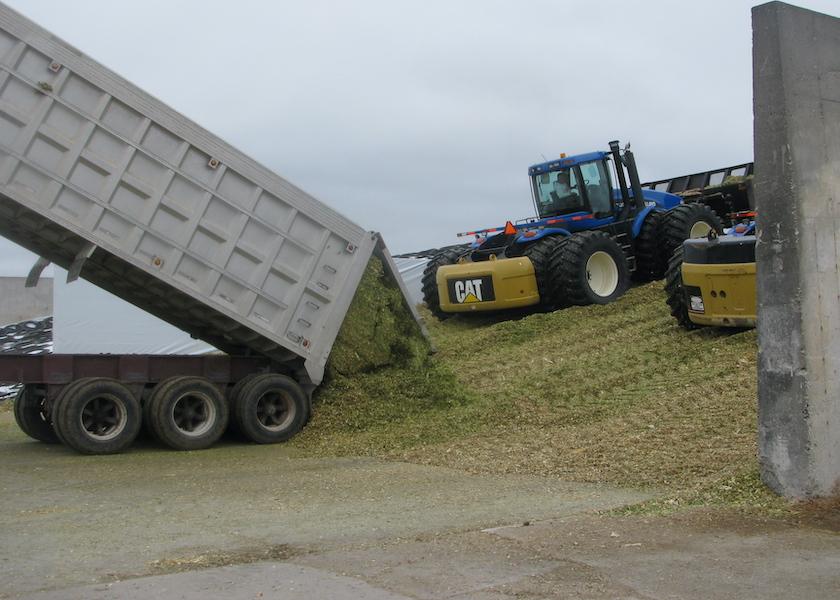Drought-stressed Corn Silage Produces Nutritional Changes

With drought bearing down on much of the country this summer, the incoming corn silage crop is going to require some close nutritional evaluation.
According to Bill Mahanna, Nutritional Sciences Manager for Pioneer Seed, a high-yielding corn crop requires between 20 and 24 inches of water through the growing season in the Midwest, and closer to 28-30 inches in the more arid West.
The fact that many regions have received considerably less rainfall than that does not necessarily mean their upcoming corn silage crop will be ruined -- but it will be changed. “The impact of drought can range from barren plants with no ears or starch content, to varying levels of starch (grain), depending on stress at pollination and subsequent kernel abortion,” Mahanna advised. “Energy will be partitioned more into sugar and fiber in the stalk and leaves rather than to grain.”
So, while most areas still will make a crop, drought-stressed corn silage does yield and feed differently. According to Bruce Ziegler, Dairy Nutrition and Technical Support Manager for Hubbard Feeds, those differences include:
- Fiber levels as NDF% can be higher – less grain means more plant material.
- Fiber digestibility (NDFD) may be higher and can allow for higher feeding rates to offset other forage inventory shortages.
- The crude protein percentage will likely be higher.
- Calcium and potassium levels also will likely be higher.
- Sugar levels also may be higher, and will offset a percentage of the extra starch supplementation needed in the ration.
- Typically, drought-stressed corn silage is lower in energy overall – about 80-90% of a normal crop.
- Corn silage with little to no starch is also ideal for dry-cow and growing heifer diets.
- Low-starch, high-sugar corn silage will normally feed very well when rations are balanced accordingly.
- There is a possibility of elevated nitrate levels, but fermentation will reduce levels in fresh silage by about 50%.
- Mycotoxins are a likely threat.
Both experts advised wet chemistry laboratory analysis of drought-stressed silages prior to feeding. “Due to the potential for variability, individual batches of droughty corn silage should be analyzed for dry matter, NDF, uNDF, NDFD, sugar, starch, and nitrates (%NO3 or ppm NO3-N),” suggested Mahanna. Given that yields will be lower combined with the fact that stressed corn is prone to increased storage losses due to high sugar and yeast loads, Mahanna also recommends the use of a research-proven inoculant containing a L. buchneri strain.
Ziegler said conducting a mold and mycotoxin analysis is critical to mitigate their potential effects on cattle. And due to the nitrate threat, he advised against green-chopping and immediately feeding drought-stressed corn plants, because nitrate concentration will be highest at harvest, before ensiling. For the same reason, there is greater concern for beef cows grazing corn stalks following grain harvest in drought conditions.
Human safety becomes a larger consideration in drought years as well. “High-nitrate-forage silages can lead to increased production of silo gas (i.e., nitrogen dioxide), so extra safety measures should be taken to ensure human safety near these stored silages,” Ziegler cautioned.







